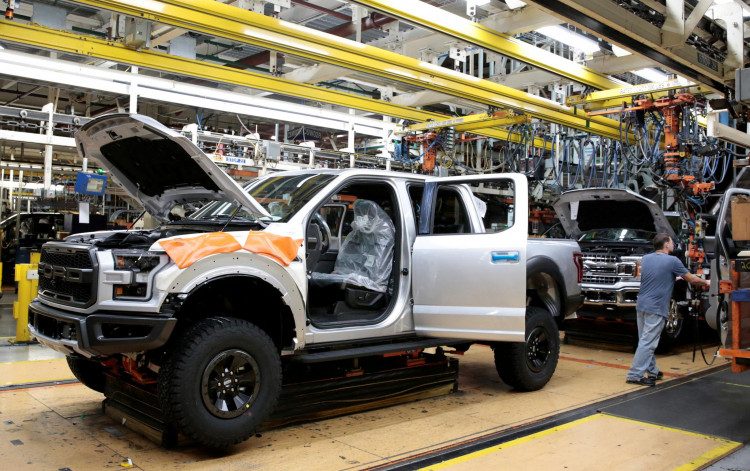Abetted by the COVID-19 pandemic, American industrial production plummeted to a never before attained historic depth in April, diving a record 11.2%.
The most severe monthly destruction in the history of the U.S. industrial production index was revealed by the U.S. Federal Reserve Friday. The Fed also said U.S. manufacturing output posted a record 13.7% plunge as production of cars, trucks and auto parts plummeted more than 70%. Production of aerospace and other transportation products, metals and furniture fell 20%. Output dropped 6.1% at mines and 0.9% at utilities.
The Fed's measure of the industrial sector includes manufacturing, mining, and electric and gas utilities. The manufacturing sector comprises some 11% of the U.S. economy.
Industry was operating at only 64.9% of capacity in April, much lower than the previous record set in 2009 during the Great Recession. Factory capacity utilization sank to a record low 61.1%.
Analysts expected an immense reduction U.S. industrial output given the widespread ravages by COVID-19 but the scale of the collapse was sickening. Jennifer Lee, a senior economist at BMO Capital Markets, admitted "one can't help but grimace" at the collapse.
The national lockdowns and travel restrictions imposed to stifle the spread of COVID-19 have brought economic activity in the U.S. to a near-standstill since February. The U.S. lost nearly 21 million jobs in April while unemployment surged to 14.7%, the highest since the Great Depression of 1929.
In 2019, it was the 18 month-long trade war against China, and not COVID-19, that ravaged the manufacturing sector. In December, however, U.S. manufacturing output increased unexpectedly due to rise in the production of other durable goods, food and beverages, and other products. The improvement offset a drop in motor vehicle output.
The Federal Reserve said manufacturing production rose 0.2% December after a 1.0% increase in November. Overall industrial output fell 0.3% in December after a downwardly revised increase of 0.8% in November.
The drop in overall industrial output was triggered by a 5.6% drop among utilities. Demand for heating fell during an unseasonably warm December.
As a whole, manufacturing rose 0.5% in December, excluding motor vehicles and parts, industrial production. On an annualized basis factory production fell 1.3% from December 2018 to December 2019.
The Fed also reported a 4.6% drop in the production of motor vehicles and parts in December. Manufacturing output of food, beverage and tobacco products rose 1.3%. Also exhibiting increases were nonmetallic mineral products (up 2.3%), primary metals output (up 1.3%) and computer and electronics products (up 1.4%).






